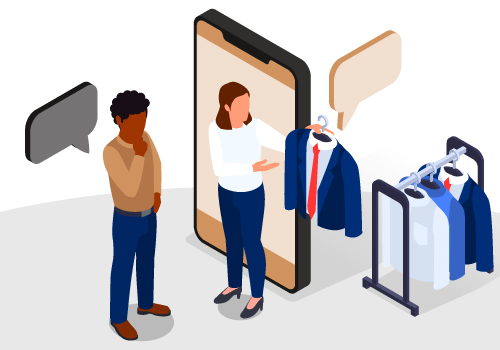The fashion industry has always been at the forefront of innovation, adapting new fashion technologies and trends faster than other industries. In the digital world, brands use tech in fashion to create new revenue streams, attract new customers, and retain old customers.
Clothing brands can use Augmented Reality to enhance customer experience, whereas Artificial Intelligence is an essential tool to optimize vast product lines. This ultimate guide will explore the fashion technologies driving the industry and will likely shape the upcoming fashion trend.
ALSO READ: How Are Beauty Brands Using Virtual Try On To Provide Personalized Services?
Need For AR Tech In Fashion
Technology is shaping the way businesses perform and connect with their customers in the online world. The latest technology, like Artificial Intelligence, is eradicating the challenges of online shopping, while Augmented Reality helps fashion brands to offer unique customer service and improve their brand value.
As customers’ real lives are deeply intertwined with the digital world, fashion brands must embrace the advancing technology to stand out from the crowd and boost brand awareness. In this fast-changing modern environment, customers will likely interact and shop from brands that focus on leveraging personalization in fashion retail.
Here are a few reasons why brands need to adopt fashion technologies to sustain themselves in the competitive market.
- Customers prefer personalized services, which fashion brands can achieve by integrating fashion technologies.
- The fashion industry is constantly evolving, and the tools allow brands to stay up-to-date with the latest advancements.
- Fashion tech tools like Augmented Reality, Artificial Intelligence, etc., open new business opportunities and help brands formulate robust marketing strategies.
- With the integration of the latest fashion technologies, brands can improve conversion rates, connect with customers at a personalized level, and reduce product returns.
Top Fashion Technologies For Brands To Explore
As per the State of Fashion Technology Report 2022, the investment of fashion brands in technology will rise from 1.6-1.8% to 3.0-3.5% of total revenue by the end of 2030. This is because customers want a hyper-personalized shopping experience, and integrating fashion technologies into the business can help brands improve customer service and streamline the shopping experience. Below is a rounded list of top tech advancements brands can use in their fashion and clothing businesses to simplify business operations and boost sales.
- Artificial Intelligence
Many industries, including the apparel industry, are leveraging the benefits of Artificial Intelligence to enhance customers’ shopping experience. AI uses algorithms to track the buyer’s journey and match them with suitable clothing or makeup products to improve customer satisfaction. The fashion technology analyzes customer data to personalize the recommendation, forecast trends, and provide guidance related to inventory management.
- Augmented Reality
The most exciting application of Augmented Reality is combining the physical and online worlds. AR tools like virtual try-on let customers try on outfits, shoes, makeup, etc., without physically visiting the store. Employing Augmented Reality technology in the brand helps boost customer engagement and retention by enabling them to try the products before they make a purchase.
SelfStylo is a virtual try-on tool for makeup brands that can be integrated with the application or website to improve the customer shopping experience. The clean interface of the AR tool and its essential features help fashion brands to improve conversion rates, boost sales, and gain customer attention.
- 3D Printing
3D printing is another fashion technology that helps clothing brands add customization, creativity, and sustainability to their business. The ultimate goal of 3D technology is to precisely print designs on clothing, minimize manufacturing error, and reduce resource wastage to improve overall business profits.
- Internet of Things
Internet of Things in fashion includes products that include sensors and software that connect and collect data over the Internet, and some of the best examples of IoT include smart watches, doorbells, and light bulbs. Fashion brands also utilize the IoT as magic mirrors that enable customers to try apparel through interactive touchscreen displays using their smart devices.
- Virtual Fashion
Virtual fashion enables fashion brands to drive more sales by helping customers try the clothes virtually before buying them. VR apps come with built-in technology that allows users to try on a product to check its style, size, color, and suitability. Besides this, digital-native shoppers can purchase digital garments to dress their characters in the online world with virtual fashion technology.
ALSO READ: What is Virtual Try On? And Why Should Brands Care?
Implement AR Tools In Fashion Brands
The fashion tech industry is constantly evolving, with small and big brands adopting the latest technology trends and tools into their business. Implementing advanced fashion technologies will help brands automate, personalize, accelerate their fashion business and gain a competitive advantage.
If you are a fashion brand intending to implement emerging technologies into your business, the SelfStylo AR tool has covered you. An AR-powered solution such as SelfStylo virtual try-on not only helps fashion brands overcome the challenges of high product return but also enables them to meet the tech-driven needs of today’s customers.

